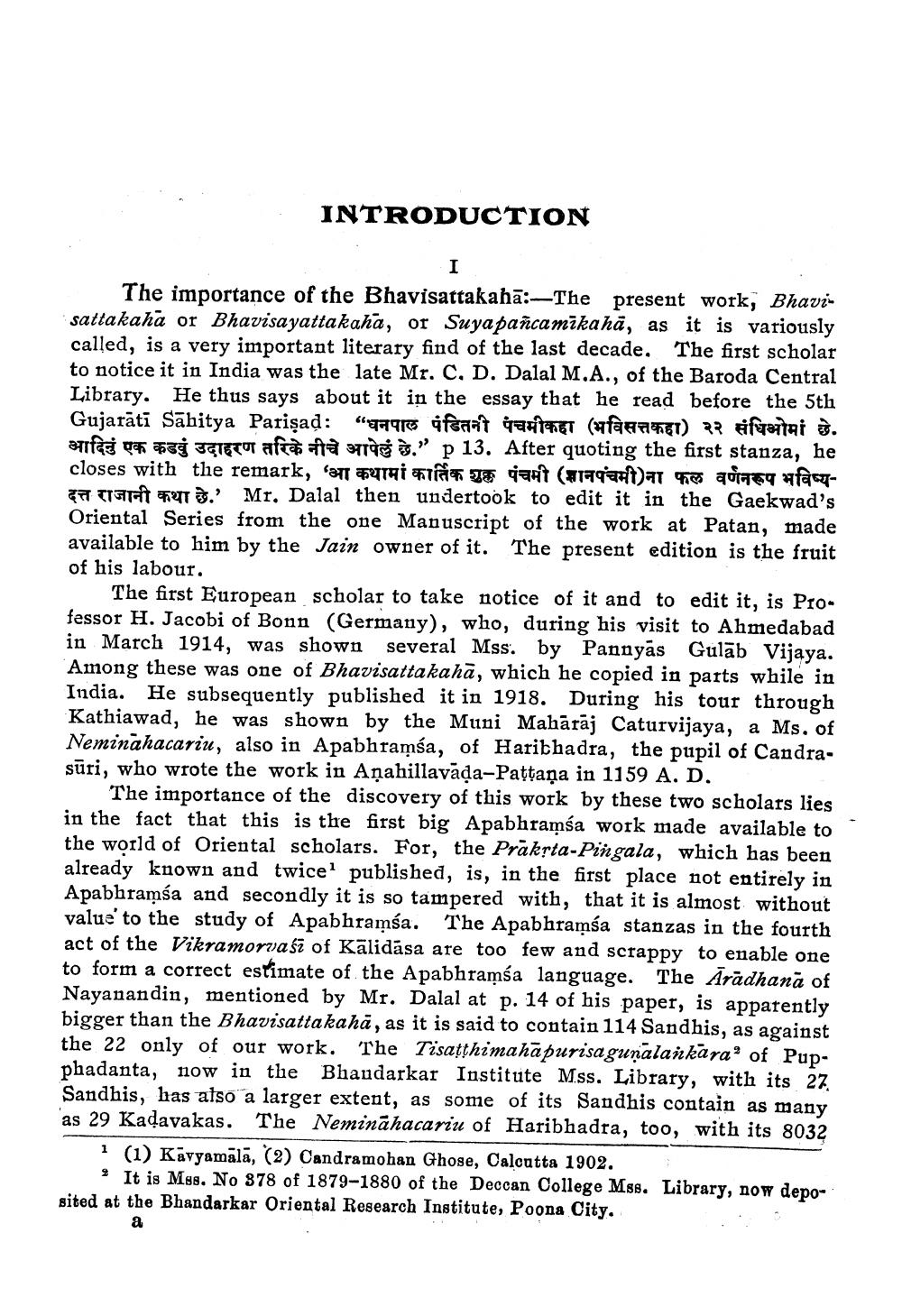________________
INTRODUCTION
The importance of the Bhavisattakahā:-The present work, Bhavisattakahā or Bhavisayattakaha, or Suya pañcamikahā, as it is variously called, is a very important literary find of the last decade. The first scholar to notice it in India was the late Mr. C, D. Dalal M.A., of the Baroda Central Library. He thus says about it in the essay that he read before the 5th Gujarati Sahitya Parisad: "qaro ofsaat auteet (fanan) 77 eftai 3.
tid tak aj CIETU afras ofta . p 13. After quoting the first stanza, he closes with the remark, (TYTHİ ATM ve gart (a179ant)at 9 quiae #fasy
TT TETT FT. Mr. Dalal then undertook to edit it in the Gaekwad's Oriental Series from the one Manuscript of the work at Patan, made available to him by the Jain owner of it. The present edition is the fruit of his labour.
The first European scholar to take notice of it and to edit it, is Professor H. Jacobi of Bonn (Germany), who, during his visit to Ahmedabad in March 1914, was shown several Mss. by Pannyas Gulab Vijaya. Among these was one of Bhavisatta kahā, which he copied in parts while in India. He subsequently published it in 1918. During his tour through Kathiawad, he was shown by the Muni Mahārāj Caturvijaya, a Ms, of Neminahacariu, also in Apabhramsa, of Haribhadra, the pupil of Candrasūri, who wrote the work in Anahillavada-Pattana in 1159 A. D.
The importance of the discovery of this work by these two scholars lies in the fact that this is the first big Apabhramsa work made available to the world of Oriental scholars. For, the Prākşta-Pingala, which has been already known and twicel published, is, in the first place not entirely in Apabhramsa and secondly it is so tampered with, that it is almost without value' to the study of Apabhramsa. The Apabhramsa stanzas in the fourth act of the Vikramorva šī of Kalidasa are too few and scrappy to enable one to form a correct estimate of the Apabhramsa language. The Aradhana of Nayanandin, mentioned by Mr. Dalal at p. 14 of his paper, is apparently bigger than the Bhavisatta kahā, as it is said to contain 114 Sandhis, as against the 22 only of our work. The Tisatthimahāpurisaguņālankara’ of Pupphadanta, now in the Bhandarkar Institute Mss. Library, with its 27. Sandhis, has also a larger extent, as some of its Sandhis contain as many as 29 Kadavakas. The Nemināhacariu of Haribhadra, too, with its 8032
1 (1) Kavyamala, (2) Candramohan Ghose, Calcutta 1902.
% It is Mys. No 878 of 1879-1880 of the Deccan College Mss. Library, now deposited at the Bhandarkar Oriental Research Institute, Poona City.




